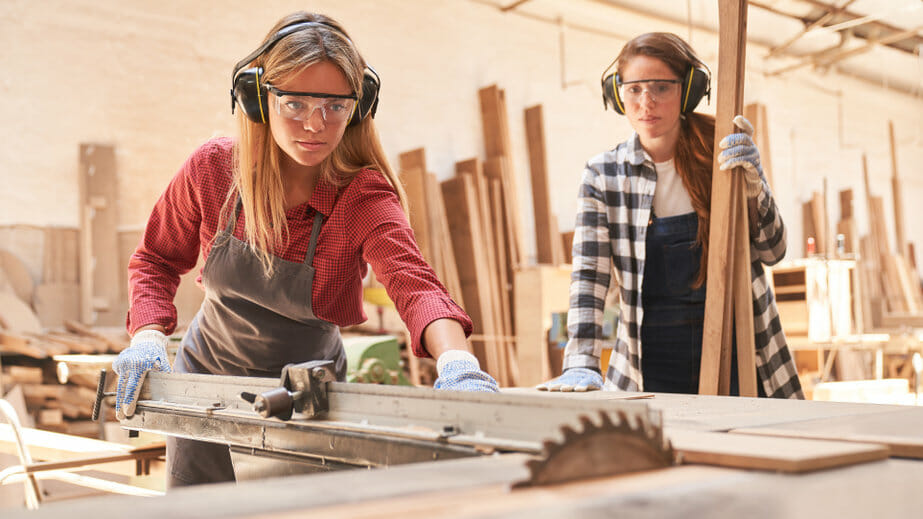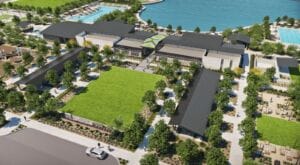For all the strangeness of an atypical year, 2021 saw a remarkable trend while the nation still struggled with the pandemic and inflation: people quit their jobs in droves. Dubbed the Great Resignation, this phenomenon meant “Help Wanted” signs became a common sight in storefronts across the country. According to the U.S. Bureau of Labor Statistics, a staggering 4.4 million employees quit their jobs in September 2021, representing 3% of workers. In October, there were 11 million job vacancies.
Some sectors, such as construction, are no stranger to positions going unfilled. Since the Great Recession, the industry has struggled with attracting and retaining workers in every trade. That was one of the animating drivers behind Build Your Future Arizona (BYFAZ), an initiative from the Greater Phoenix Chamber Foundation.
In 2019, the Foundation created a Construction Workforce Collaborative in which several companies came together to focus on how to build a talent pipeline.
READ ALSO: How can Arizona keep up with increased construction labor demands?
“For years, the folks involved with the collaborative had been struggling just having enough entry level talent to replace the workers who are about to retire. Arizona is projected to need 254,830 construction jobs filled through the end of 2024, with 57,000 of those being carpentry positions alone,” explains Paul Sanders, workforce development manager for the Greater Phoenix Chamber Foundation. “These companies sat down and identified the reasons why they were unable to have a steady pipeline of talent.”
He notes that they pinned it down to three basic things: a negative sentiment around the trades, misconceptions about possible career paths and the overall lack of knowledge pertaining to training opportunities.
With the main roadblocks determined, the group looked to the Build Your Future program by the National Center for Construction Education and Research (NCCER) as a model. The organization offered a website template that the collaborative decided to pursue as a platform where people can learn more about construction career paths and earning potential.
With that, BYFAZ was born.
“The primary goal is to get young adults to consider careers in construction,” Sanders says.
Changing Perceptions
For decades, high school counselors focused their career advice on attending a university. While many students can and should pursue a degree, the emphasis on formal postsecondary education made other viable paths an afterthought. In the worst cases, a career in the trades has been used as a foil to encourage students to go to college. The reality is, post-secondary education is often required for skilled trades and several Arizona community colleges, including Maricopa County Community College District are adding skilled trade programs to their course offerings.
Marcia Veidmark, president and CEO of SSC Underground, remembers when higher education institutions began aggressively marketing four-year degrees to students. She recalls a poster that featured two students standing side by side. One was dressed in the personal protection equipment of a construction worker; the other wore a suit and held a briefcase. The advertisement asked, “Which do you want for your child?”
“I remember thinking, ‘Why are you degrading the trades like that?’ I’ve been in Arizona for more than 50 years, so I watched universities successfully market that the best option for your child is a four-year degree, and that’s just not true,” she says. “We should show mutual respect and support for both tracks. I want good doctors, but high school counselors should talk about the construction trades because we need the hospital to be built, too. Every one of us is critically important.”
Countering this notion takes time and consistent messaging. Dan Puente, founder and CEO of
DP Electric, says there is no quick fix. He estimates it could take BYFAZ anywhere from 9 to 12 years to make serious inroads.
“We’re pushing back against 60-plus years of a narrative that says you need to go to college to be successful,” Puente notes. “Folks don’t understand the opportunities available in construction. A lot of people in the industry make six figures, and that’s what Build Your Future Arizona is trying to convey to the public.”
Indeed, the trades can be a lucrative vocation. What most people fear, Sanders explains, is that they won’t have any upward mobility. “Just because you start as a welder doesn’t mean that you have to weld your whole life. You could transition to welding design, which would require some additional education,” he says.
Some people may even take a similar path to Puente, who opened his own business. “Through the support of my wife, I started DP Electric in 1990. I wanted to create something in which I could thrive, and others could flourish as well. That’s why we started our own apprenticeship program with more than 100 people enrolled. We don’t overlook anybody.”
Puente adds that there is an effort in Arizona to have a completed apprenticeship recognized as equivalent to an associate degree, which he believes could help reluctant parents see the benefits of the trades.
“That would show that an apprenticeship is an education in a career, in the same way as getting a degree in accounting. It’s about acknowledging the value of the time invested in learning something,” he says.
Career Focused
One of the primary arenas for BYF Arizona is high schools. Career and technical education have experienced a revival on Arizona campuses, with programs such as skilled trades and automotive mechanics returning to the course catalog. And, unlike the past, they are typically attached to one or more certifications that students can leverage for gainful employment.
Moreover, the Arizona Legislature created career technical education districts (CTEDs) in 1990 to further support trades education. There are 14 of these districts across the state, with Western Maricopa Education Center (West-MEC) and East Valley Institute of Technology (EVIT) covering most of Greater Phoenix.
“We partner with West-MEC and EVIT to get in front of students and talk firsthand about careers in construction — what they’re like, the demand for them and potential salaries for different positions,” Sanders explains. “We can show them how what they’re learning leads to a career.”
Build Your Future Arizona is also launching an ambassador program in the first quarter of 2022. Sanders say that BYF Arizona is recruiting industry professionals to speak with students in the classroom, at lunch tables and during career fairs.
“We’re trying to enlist folks who have enough experience behind them to show that they’re on a solid career path, but who don’t look like they’re ready to retire. That way, students can see them and think, ‘I don’t have to wait until I’m my parent’s age to earn a six-figure income,’” he notes.
Build Your Future Arizona also targets adults who are interested in a career transition.
“There are more than 20,000 Arizonans who lost their jobs in the food service and hospitality industries because of COVID-19. And yet, those people still need to work,” Sanders says.
If someone is looking to get into construction, Sanders will schedule a consultation, during which he’ll ask about the individual’s background and work experience to help identify what talents he or she might already possess.
“Are you more interested in the skilled craft side such as carpentry? Or are you looking at relating your acquired knowledge to support roles relating to construction? I get that feel first, then we get down into what division of construction makes sense,” Sanders explains.
Once a good fit is determined, Sanders takes the applicant’s resume and reaches out to the recruiters at one of the 57 companies that have invested in BYFAZ.
“We have a career center with connections to about 400 jobs on it at a time. I try to align the person with the organization I think they would best connect with, since many companies hire for cultural fit,” he continues.
Even though BYF Arizona helps people connect to careers, Puente notes that the initiative is more about awareness.
“We’re building the momentum to make construction a first choice for people. We have to work hard to change the perception for both students and parents,” he concludes. “That’s going to take some time. The industry is finally coming around and getting engaged, but I think we can do more.”




